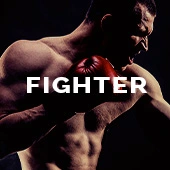The following guest column submission is written by Dmitriy Salita, founder of Salita Promotions. After immigrating from Ukraine to Brooklyn at age nine, Salita became a decorated amateur boxer and accomplished pro who transitioned into promoting and founded Salita Promotions, which recently signed current WBA and WBC super middleweight world champion Franchon Crews-Dezurn, plus reigning light heavyweight world champions Lani Daniels and Che Kenneally. On July 26, undisputed world champion Claressa Shields will face Daniels at Little Caesars Arena in Detroit on DAZN.
Sugar Ray Robinson. Riddick Bowe. Mark Breland. These aren’t just legends of boxing, they’re alumni of the New York City Golden Gloves, a tournament that shaped icons and launched world-class careers. The list of champions is long, and their legacies began in local bingo halls, school gyms, and community centers across the five boroughs. The Golden Gloves wasn’t just a tournament, it was the foundation of New York boxing and beyond, decade after decade.
From January through April, the Golden Gloves felt like a real sports season. Over 1,000 fighters applied each year, training hard through the fall, knowing what was at stake. Fights took place several times a week in packed local venues – in front of friends, families, and neighbors who didn’t start as boxing fans but became lifelong supporters. Fighters gained experience, pride, and relationships that lasted far beyond their careers.
Trainers became legends in their own right, and gyms across the city battled for more than just titles as they fought for bragging rights. Starrett City, Gleason’s, Bed-Stuy, Webster PAL each chased the team trophy. The tournament was covered like a major league sport. Bill Farrell of the New York Daily News chronicled the action consistently, while writers like Michael Katz and Mark Kriegel told the stories behind the gloves.
Local businesses sponsored “Fighter of the Night” awards. TV crews followed standout boxers from the opening round to the finals. Fox 5 Sports Extra ran features. MSG Network televised the championship bouts at Madison Square Garden, with legendary commentator Gil Clancy on the mic. Celebrities filled the front rows. The Golden Gloves had the perfect mix of grit, glamour and grassroots energy.
I lived it firsthand. At 13, a young immigrant from Ukraine, I started boxing at Starrett City Boxing Club in Brooklyn – a powerhouse gym that produced champions like Shannon Briggs, Monte Barrett, Sadam Ali, Luis Collazo, Danny Jacobs, Curtis Stevens and more. In that environment, the Golden Gloves was our Super Bowl.
Winning the tournament and receiving the Sugar Ray Robinson Award was one of the proudest moments of my life. The day of the finals, Kriegel profiled me and my trainer, Jimmy O, for the New York Daily News. That exposure, along with a national title, led me to sign my first professional contract with Top Rank. More importantly, it gave me the experience and confidence to perform under pressure – in big arenas, in front of fans far from home.
That’s the power of the Golden Gloves. It didn’t just create champions – it built stars from the ground up. Fighters entered the pros with real followings because fans had seen the journey. Win or lose, they were part of the city’s fabric. There was a system in place, a pipeline from the gym to the spotlight, from local hero to city celebrity.
Now imagine that same system in today’s world with social media, streaming platforms and global connectivity. A new generation of fighters could build their followings from day one, telling their stories directly to fans. The Golden Gloves can be more than nostalgia – it can be the spark that reignites boxing from the grassroots level up.
Boxing is on the rise again. Big fights are back in major venues. Unique matchups are drawing real attention. But if we want the sport to truly thrive, we need to reconnect with what made it great: community, consistency and stories that matter.
The Golden Gloves brought people together. It created rivalries, inspired dreams and gave young fighters something to fight for. It was more than a tournament – it was the soul of New York boxing.
To move the sport forward, we might just need to look back.

